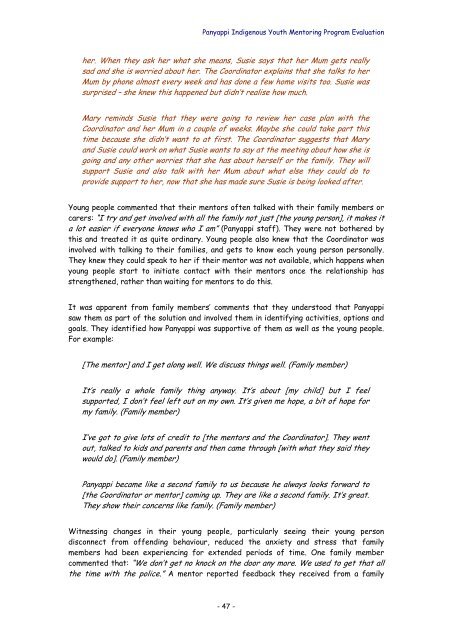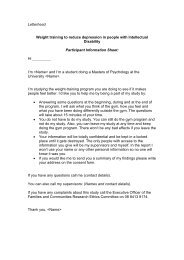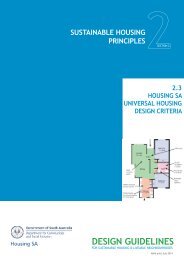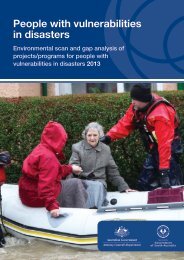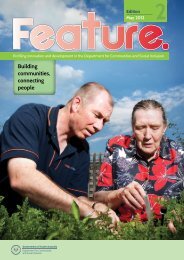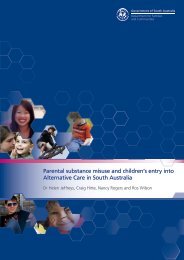Panyappi Indigenous Youth Mentoring Program Evaluation
Panyappi Indigenous Youth Mentoring Program Evaluation
Panyappi Indigenous Youth Mentoring Program Evaluation
Create successful ePaper yourself
Turn your PDF publications into a flip-book with our unique Google optimized e-Paper software.
<strong>Panyappi</strong> <strong>Indigenous</strong> <strong>Youth</strong> <strong>Mentoring</strong> <strong>Program</strong> <strong>Evaluation</strong><br />
her. When they ask her what she means, Susie says that her Mum gets really<br />
sad and she is worried about her. The Coordinator explains that she talks to her<br />
Mum by phone almost every week and has done a few home visits too. Susie was<br />
surprised – she knew this happened but didn’t realise how much.<br />
Mary reminds Susie that they were going to review her case plan with the<br />
Coordinator and her Mum in a couple of weeks. Maybe she could take part this<br />
time because she didn’t want to at first. The Coordinator suggests that Mary<br />
and Susie could work on what Susie wants to say at the meeting about how she is<br />
going and any other worries that she has about herself or the family. They will<br />
support Susie and also talk with her Mum about what else they could do to<br />
provide support to her, now that she has made sure Susie is being looked after.<br />
Young people commented that their mentors often talked with their family members or<br />
carers: “I try and get involved with all the family not just [the young person], it makes it<br />
a lot easier if everyone knows who I am” (<strong>Panyappi</strong> staff). They were not bothered by<br />
this and treated it as quite ordinary. Young people also knew that the Coordinator was<br />
involved with talking to their families, and gets to know each young person personally.<br />
They knew they could speak to her if their mentor was not available, which happens when<br />
young people start to initiate contact with their mentors once the relationship has<br />
strengthened, rather than waiting for mentors to do this.<br />
It was apparent from family members’ comments that they understood that <strong>Panyappi</strong><br />
saw them as part of the solution and involved them in identifying activities, options and<br />
goals. They identified how <strong>Panyappi</strong> was supportive of them as well as the young people.<br />
For example:<br />
[The mentor] and I get along well. We discuss things well. (Family member)<br />
It’s really a whole family thing anyway. It’s about [my child] but I feel<br />
supported , I don’t feel left out on my own . It’s gi ven me hope, a bit of hope for<br />
my family. (Family member)<br />
I’ve got to give lots of credit to [the mentors and the Coordinator]. They went<br />
out, talked to kids and parents and then came through [with what they said they<br />
would do ] . (Family member)<br />
Panyapp i became like a second family to us because he al ways looks forward to<br />
[the Coordinator or mentor] coming up. They are like a second family. It’s great.<br />
They show their concerns like family. (Family member)<br />
Witnessing changes in their young people, particularly seeing their young person<br />
disconnect from offending behaviour, reduced the anxiety and stress that family<br />
members had been experiencing for extended periods of time. One family member<br />
commented that: “We don’t get no knock on the door any more. We used to get that all<br />
the time with the police.” A mentor reported feedback they received from a family<br />
- 47 -


